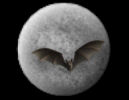
ATM Forum Message | |
| Forums: |
Atm ·
Astrophotography ·
Blackholes ·
Blackholes2 ·
CCD ·
Celestron ·
Domes ·
Education
Eyepieces · Meade · Misc. · God and Science · SETI · Software · UFO · XEphem |

 |
|
 |
||||
|
|
||||||
Be the first pioneers to continue the Astronomy Discussions at our new Astronomy meeting place... The Space and Astronomy Agora |
| Re: Scopes
Forum List | Follow Ups | Post Message | Back to Thread Topics | In Response To Posted by Josh Miller/">Josh Miller on September 18, 1999 22:35:10 UTC |
|
Look at the Off-axis newtonians sold by DGM. They use a piece of a larger mirror, so that the secondary does not interfere with the light path. They are not tilted component telescopes, so they don't need extremely long focal ratios, complex corrector len systems, or oddly figured secondaries. I have heard that they are equal to refractors of similar aperature, but are color free. They are light weight, compact, and inexpensive compared to refractors. : I think that you will be best served by getting a 8" F8 or so Newtonian and doing all the things that will improve the contrast like putting in a good set of baffles and making sure the secondary isn't too large. The smaller secondary improves the Airy disk image although on the other hand it also ends up reducing the brightness at the edge of the FOV of lower power EPs. I agree with you about the SCTs that Meade and Celestron have as far as really high power views as they do have a significant obstruction and, unless they are collimated properly, they do have rather poor images. Also understand that there's a lot of poor quality optics for them out there as the period before and after Halley's comet had some very poor optics produced. Both companies lost thier recipies for making correctors (the most difficult part of the scope) and only really regained the ability in the last few years. The SCTs are an acceptable compromise for what they are but not for the discerning user. : As for refractors, the cost is due to the price of the glass - I have the glass (not shaped yet) for a 6" that I got for a song, only $600! Considering that I can get the pyrex kit for a 6" reflector for less than $100 and a good 96% coating for another $120, there's no comparison for cost. : For an observatory, I would consider about 30" F8 Newt as an ideal instrument. This means a tube of about 24' long but you won't need a dome much bigger than that (28-30') and although that's a large dome, go find out what silo domes are for size and that will make a good start for your observatory. I would consider making a smaller diameter before dropping on the F ratio. : One of the things that you will have to remember is that you want planetary scope now but later, you may want something with some light grasp. One of the guys in our mirrormaking group is doing some asteroid work and occasionally checks up on catylismic variable stars and because he is an amateur with his own scope, he can put in the time that the pros can't and as a result, he regularly makes discoveries that the pros can use in thier researches. You can always stop a larger scope down but you can't expand a small scope when the viewing is good or you need just a little more to see an object. : Good Luck with you decisions. You can always use a small refractor as the tracking scope if you really want one.
|
|
|
| Additional Information |
|---|
| About Astronomy Net | Advertise on Astronomy Net | Contact & Comments | Privacy Policy |
|
Unless otherwise specified, web site content Copyright 1994-2025 John Huggins All Rights Reserved Forum posts are Copyright their authors as specified in the heading above the post. "dbHTML," "AstroGuide," "ASTRONOMY.NET" & "VA.NET" are trademarks of John Huggins |